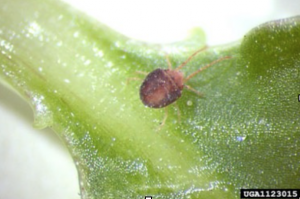
Figure 1. Clover mite. (Photo: Rayanne Lehman, Pennsylvania Department of Agriculture)
Clover Mites. Clover mites are occasional invaders that can become a problem in early spring. They are tiny (1/30-inch long), red to reddish- brown, oval-shaped mites. Clover mites, as do other arachnids, have 8 legs. They hold the front pair of legs straight out in front of the head. Many people actually mistake this pair of legs for antennae (Figure 1). Clover mites do not bite nor do they burrow under the skin. They are strictly plant feeders. Hosts include grasses, clover, and dandelion, to name a few.
Most heavy outbreaks occur in the early spring, especially around heavily fertilized lawns. The mites may invade homes and can leave a reddish-brown stain if crushed.
Control. An 18”-24” grass and weed-free zone around the structure’s perimeter can greatly reduce the number of invading clover mites (Figure 2). Treat a 5-10 foot wide area of ground along the foundation, as well as an 18-24 inch wide vertical band of the foundation wall with an appropriately labeled residual liquid insecticide.
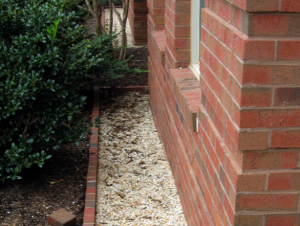
Figure 2. Placing gravel around the structure can help prevent clover mite invasions (Photo: M. Waldvogel, NCSU).
Many plants are actually unattractive to clover mites, including geranium, marigold, zinnia, salvia, rose, chrysanthemum petunia, juniper, spruce, yew and barberry. Planting these non-attractive plants in the weed-free zone will help reduce the number of clover mites around the structure. You may also recommend that your customers contact their county Cooperative Extension Center for advice on proper fertilization of their lawns.
The application of insecticides indoors for clover mites is not warranted. Your customer should simply use a vacuum cleaner to collect any mites found indoors. Care should be taken not to crush the mites. The vacuum bag should be sealed in a disposable plastic bag before throwing it away.
Carpenter Bees. Like other bees, carpenter bees are beneficial in that they pollinate crops and home gardens. However, homeowners are often frightened about being stung by the carpenter bees as they hover around their homes and other wooden structures while searching for mates and favorable sites to construct their nests. A male carpenter bee may be “aggressive” when protecting its nesting site, but is harmless because it does not have a stinger. And although a female has a stinger, she will not usually sting unless handled or bothered.
Carpenter bees nest in wood; common nesting sites include house siding, eaves, window trim, fascia boards, decks, fences, and outdoor furniture.
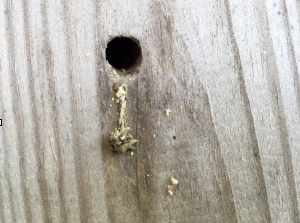
Figure 3. Carpenter bee entrance hole. (Photo: Patty Alder, NCSU)
One sign of carpenter bee infestation is the nearly perfect round 1⁄2-inch entrance holes in exposed exterior wooden surfaces (Figure 3). Another sign of activity is the pile of coarse sawdust underneath freshly drilled holes. The sawdust is cast out while carpenter bees excavate tunnels. Yet another sign of infestation is the yellow or brown staining from voided fecal matter.
Carpenter bees can cause considerable structural damage from repeated colonization of the same area. Woodpeckers often peck through the wood surface of carpenter bees’ tunnels to prey on the larvae inside, thus causing even more damage.
Prevention & Control. Bare, unpainted, or weathered softwood is especially vulnerable to carpenter bee attack. To help prevent carpenter bee infestation, paint or varnish all wood surfaces. For the best results, apply two coats of a good exterior primer and follow up with at least one coat of finish. Painting is not practical for many wood surfaces, however, and wood stains provide little protection.
In some cases, standard window screening can be used to keep bees from getting to areas of unpainted surfaces or other places where it might be difficult to paint. Strips of metal window screening work best; don’t use the fabric or plastic type. The screening can then be wedged or stapled into areas the bees are infesting.
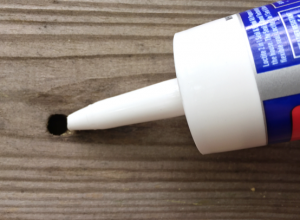
Figure 4. Carpenter bee holes may be sealed with caulk or wood putty. (Photo: Patty Alder, NCSU)
Spray or dust insecticide may be placed directly into the carpenter bees’ entrance holes or adjacent wood surface to reduce carpenter bee activity. These control efforts should be attempted in late afternoon or at night when the bees are inside the wood tunnels. Treated tunnels may be sealed with caulk or wood putty (Figure 4); however, do not plug the holes immediately. Bees should be able to pass freely through the nest entrance where they will contact the insecticide and distribute it inside the tunnels. Also, any new mature bees will emerge through the openings and contact the insecticide placed there. In the fall, the holes should be filled with caulk or wood putty.
Paper Wasps. Another insect you may begin receiving calls about (if you haven’t already!) is the paper wasp. We all know that these insects can become a problem in the fall as the inseminated queens invade homes in search of overwintering sites. But paper wasps can also become a problem in the spring. As spring approaches and temperatures begin to climb, queens that spent the winter in structures become active and fly about. If they have been resting in an attic, wall void or crawlspace, the wasps may be attracted to light coming through a gap in the baseboard or a wall fixture, or around an AC vent and emerge inside the building. Since there are no nests or young to defend, the only real danger of being stung is from accidentally stepping on or pressing against one.
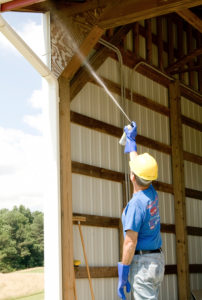
Figure 5. Use an aerosol insecticide to destroy a paper wasp nest (Photo: Patty Alder, NCSU).
Control. Queens that are found indoors may simply be swatted, or vacuumed. If a queen does manage to get outdoors and start a nest, a broom may be all that is needed to knock it down.
If a wasp nest has had some time to grow and is considered to be a hazard, they are most easily destroyed in the evening with an aerosol insecticide that is labeled for “hornets or wasps” (Figure 5).
Solitary Ground-Nesting Bees. There are several kinds of small hairy or metallic bees that dig into the soil to nest, often collectively referred to as digger bees. This is a diverse group that comes from different families and the term digger bee can include the andrenid bees, halictid bees, and colletid bees. These are solitary bees and native pollinators that are active early in the season.
Each female digs a cylindrical underground tunnel as a nest (as opposed to social bees such as honey bees where only the queen reproduces and maintains a colony with the help of sterile workers). The underground nest is provisioned with a mixture of nectar and pollen collected from nearby flowering plants. This serves as food for the bee’s offspring (larvae) that develop in the underground chamber and emerge as adults the following year.
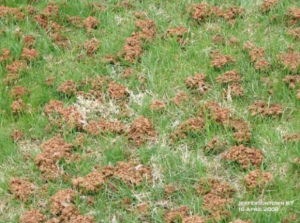
Figure 6. Digger bee mounds. (Photo from Ornamental Entomology ListServe)
Digger bees usually emerge in May and are active for a relatively short period – about 6-8 weeks or so. The first sign of digger bees in lawns is often little mounds of soil with a hole nearby (see Figure 6). The ground bees will also be flying over this area.
Control. Ground bees like dry soils. Watering the soil when bees first become active may deter nesting. Ground bees also prefer to nest in dry areas where the grass is thin. If possible, correct the problems making the turf thin. Find ways to thicken the turf in these areas to reduce ground bee problems. In areas that will not grow grass, mulching the area can help as well.
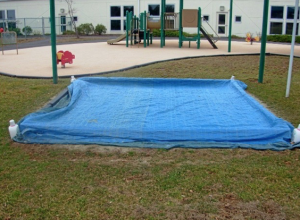
Figure 7. Sand boxes and other play areas may be covered with a tarp to reduce bee activity. (Photo: Mike Waldvogel, NCSU)
If the bees are flying around and attempting to nest in sandboxes or other areas children play, another option is to temporarily cover the area with a tarp until the bees have moved on (see Figure 7).
If you feel a pesticide is warranted, watch during the day to see where the holes are located. Each hole (nest) may then be treated directly with a dust or spray insecticide. A dust insecticide may cling to the bee’s body better than a spray. Keep people and pets out of the area while it is being treated.

